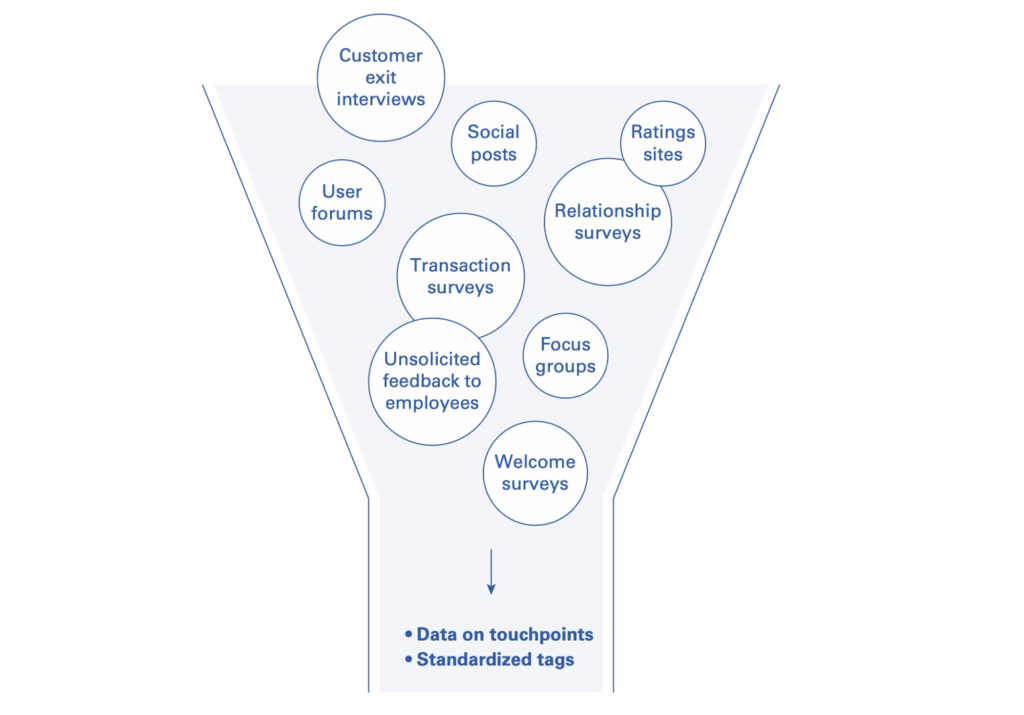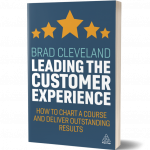Your feedback process should act as a funnel, catching data from all the various sources and bringing it into a centralized location. This could be a database that’s part of your customer relationship management (CRM) system, a dedicated customer feedback system, a business intelligence tool, or perhaps something homegrown. I’ve seen many different approaches work. As you select the best technology alternatives, keep simplicity and flexibility top of mind.
As you get feedback from various sources, it’s helpful to be consistent in what you collect. Capturing data in a handful of key areas is particularly useful, including:
- Touchpoint. What was the touchpoint, or where was the customer in their journey? For example, this could be after a repair, or an interaction with customer service.
- Objective. What was the customer’s objective? For example, they wanted to get their cable working again.
- Experience. What was the actual experience? The cable got repaired but it happened outside the promised window of time.
- Emotional impact. What was the emotional impact of this experience? The range you establish could be very satisfied to very unsatisfied, on a scale. I’ve seen alternatives such as very happy to very frustrated. What words best capture emotion in your setting?
These factors give you a solid foundation for comparing both structured and unstructured feedback. UL, a global company that provides product testing and certification, made a push to more completely capture the on-the-fly feedback their employees were hearing. They created a simple feedback form inside their CRM system. The link can be accessed quickly by any employee, anytime. For example, they can easily pull up the form from their phone and enter the customer’s feedback. Nate Brown, who spearheaded the effort, said at the time, “This is a complete game-changer in how UL understands customers.”

Not all methods for collecting feedback have to be technology-enabled. Homeroom is a popular mac and cheese restaurant in Oakland, California. (Yes, it’s a restaurant focused on mac and cheese and it’s not to be missed if you’re in the Bay Area. My favorites? The Aged White Cheddar Mac and the Jalapeño Popper Mac.) As her restaurant took off, founder Erin Wade encouraged employees to use simple index cards to share ideas, which they filled out by hand and turned in at the end of their shifts. In some cases, “no tech” can be a great starting point.



0 Comments